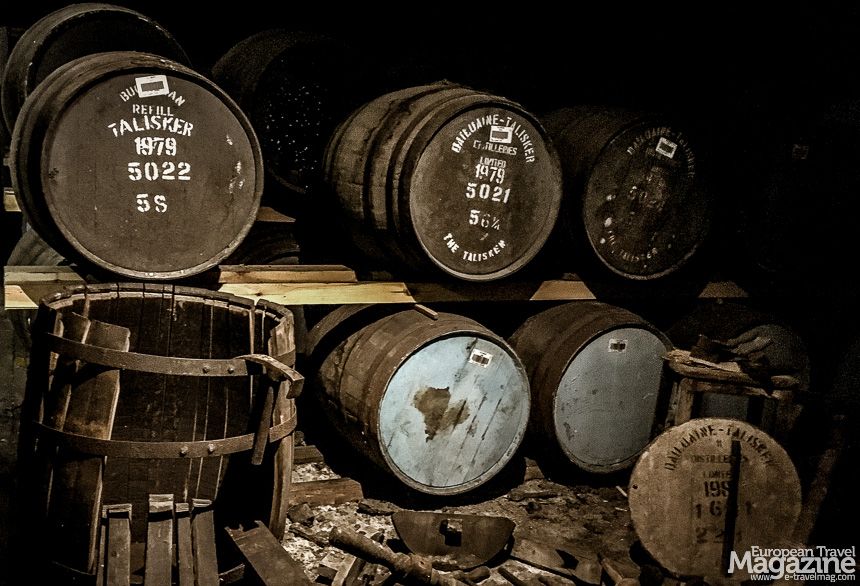All over the world, strong spirits have been called “Water of Life” and in Latin that’s translated to Aqua Vitae. In Scandinavia the interpretation is Akvavit and in Gaelic Scotland it is Uisge Beatha. Say that three times fast after a Whisky and it’ll sound like.. – yes, you guessed right: Whisky!

In this rugged part of Britain, where the weather is unpredictable with rain, fog and wind but also a clear blue sky, where the highland is jewelled with 790 lakes and 284 mountains and where there’s far between inhabited houses and gloomy ruins in grey granite, one becomes overwhelmed with its rough beauty.
Uisge Beatha, the Water of Life was called in the original Gaelic language, which nowadays only 1% of the 5 million Scots can master. But even though the word transformed to Whisky, the Whisky itself is unchangeable, uncompromising and thus permeates Scottish history, culture and business.
The rough climate and the struggle to survive in these harsh conditions beckoned for a draught, that was part universal medicine with herbs and honey, part intoxication remedy.

More than a thousand years ago, monks brought the art of distillery to Scotland and even though their Aqua Vitae was strong and probably not always based on malted corn, making it just a remote relative to the nowadays Whisky, it brought repair and relief to a cold body and a weary mind.
Today, Whisky is a worldwide business, giving hangover to people in every part of the world and giving the Scots money in their pocket. Every year, 96 million cases, each containing 12 bottles of Scottish Whisky, is exported. That is 40 bottles per second!
The Whisky export brings in more than 1 billion euros a year just in taxes, the industry employs 35.000 people in total and Whisky makes out one fourth of the total British export of food and beverages. Scottish Whisky is three times better selling than its Irish or American peers and there is more Whisky consumed in France in one month, than Cognac in one whole year.

Just as the French classify their wines using districts, castles and terroir, the Scots classify their Whisky into the different Scottish regions, where each region has a special effect on the taste, giving it a unique characteristic.
Combined with the 2 basic types of Whisky, on which all blends of Whisky is based : Single Malt and Single Grain and the 3 types of blends: Blended Malt, Blended Grain and Blended Whisky, there are lots of variations and a good possibility, that you’ll find a Whisky, that is right for you!


